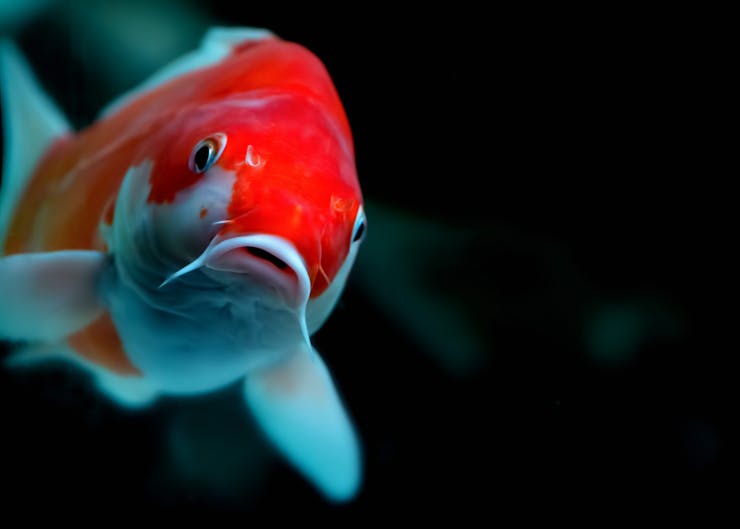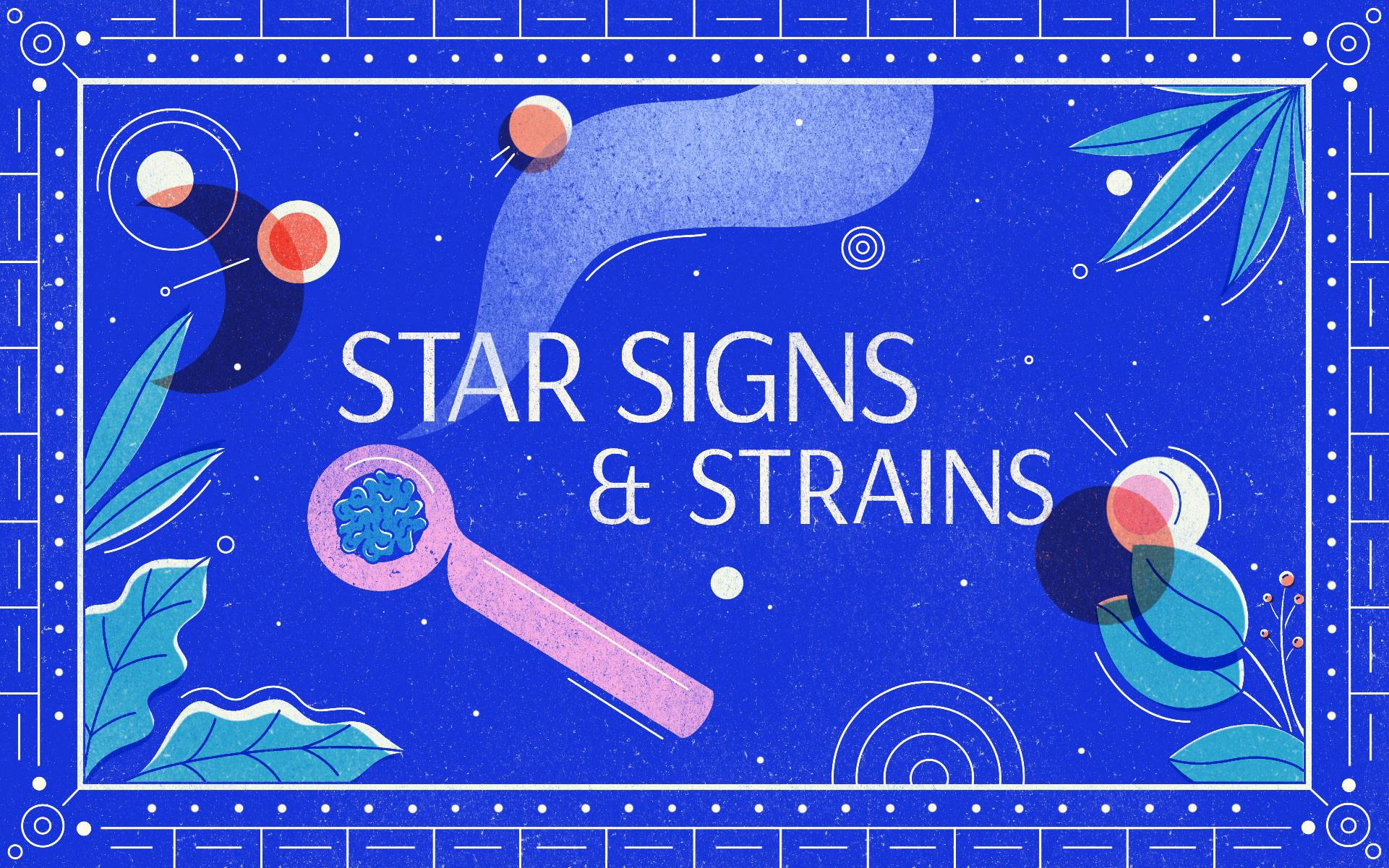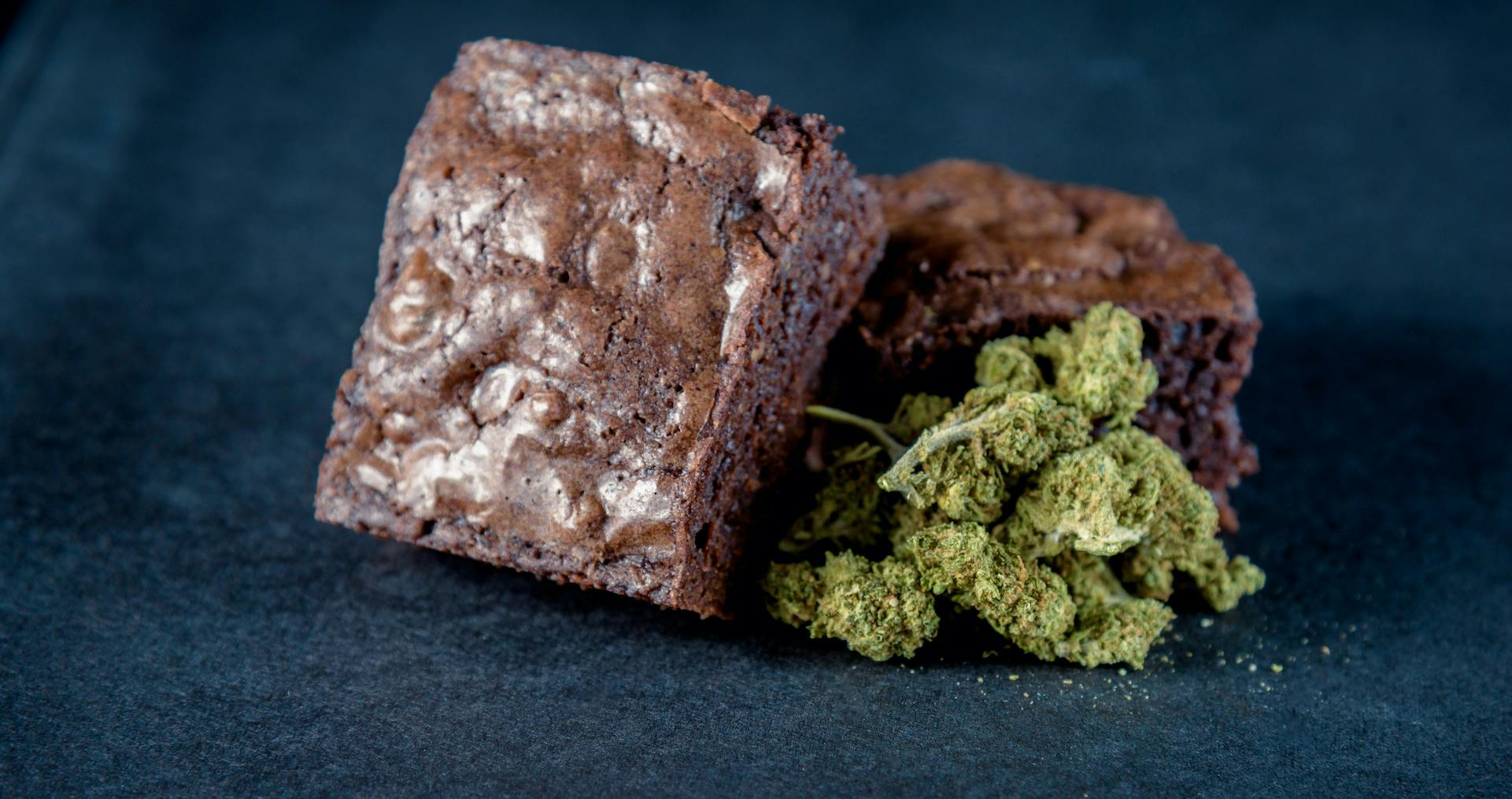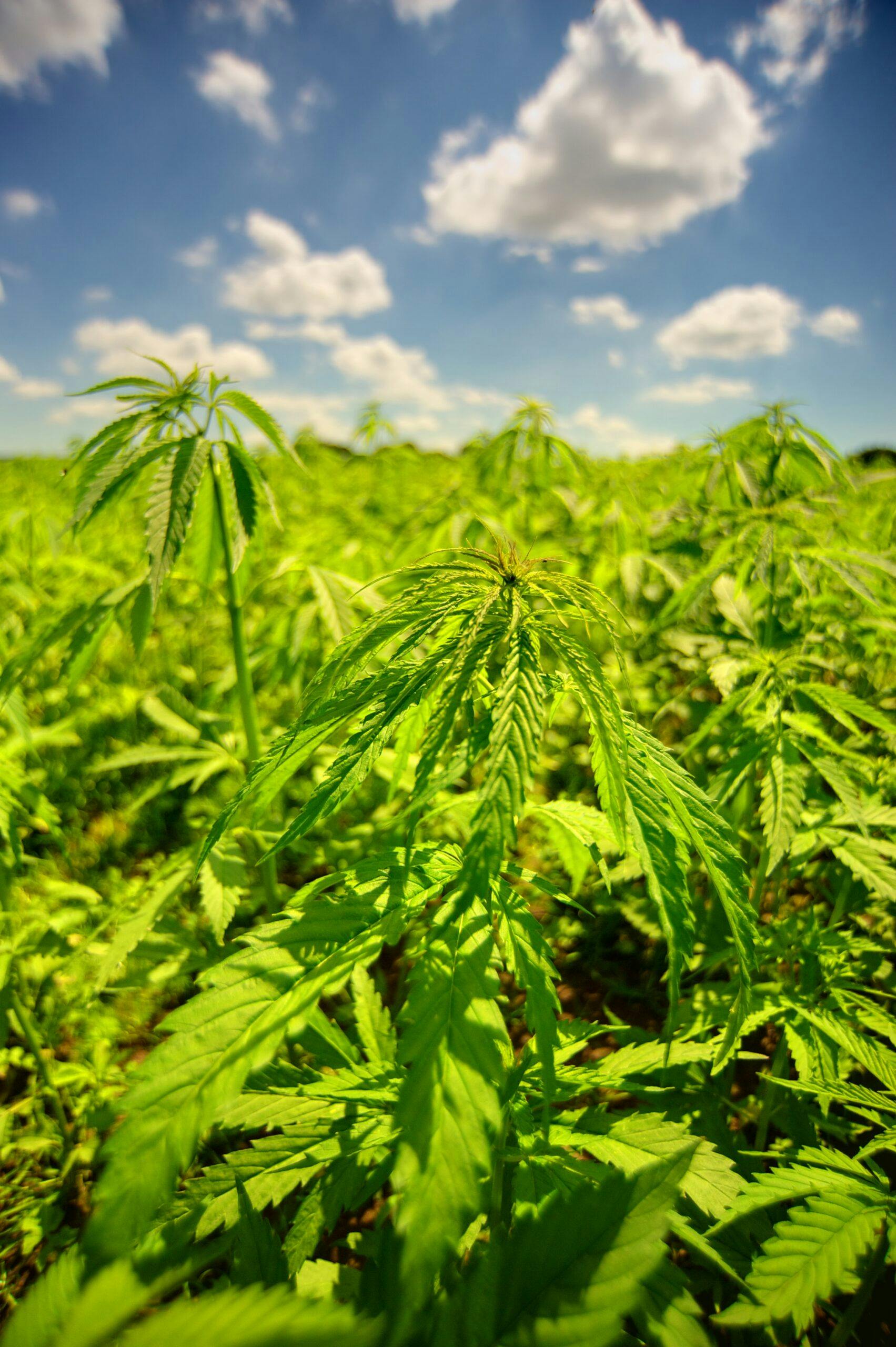Did you know that some of the Canadian weed is grown using fish waste? No, we aren’t being koi; aquaponics is a unique and environmentally-friendly way to grow cannabis.
The practice of aquaponics uses fish waste to naturally fertilize cannabis plants in a sustainable, closed-loop system. The setup is similar to hydroponics, plant roots absorb the fish fertilizer and then purify the water before outputs are returned to the aquarium. This means cultivation is self-sustaining; reducing water, waste, and greenhouse emissions outputs.
Cannabis producers like Aqualitas (koi), Green Relief (tilapia, Habitat Life (salmon), and Stewart Farms (tilapia) are using the power of fish feces to cultivate cannabis.
Aquaponics-cultivated pot products appeal to animal lovers and cannabis enthusiasts alike, as well as create a rare opportunity for consumers to get their hands on guilt-free ganja.
“[With aquaponics] we see increases in yields, increases in cannabinoids, and increases in terpenes,” said Danielle Maitland, aquaponics development supervisor at Aqualitas.
Women, weed, and animal welfare
Virtually every cannabis PR has at some point claimed their client is disrupting the industry and Aqualitas (and their adult-use brand Reef) are actually doing so.
Located in Brooklyn, Nova Scotia, the woman-led licensed producer, which was Canada’s first Clean Green-certified producer of organically-grown cannabis, is set on the site of an old paper mill that was refurbished to facilitate small-batch, aquaponic cannabis production.

Their aquaponics system consists of seven water tanks with a system volume of approximately 60,000 litres that houses between 800 and 900 koi fish. The setup is a closed-loop system with an ecological design that the company claims “reduces energy consumption by up to 50% and water consumption up to 80%” compared to standard cultivation methods.
With a focus on producing top-shelf medical and adult-use cannabis while incorporating sustainability and animal welfare into their practice, Aqualitas combines weed, water, women, and animal welfare—and everyone is winning.
Pets with a purpose
In many aquaponic setups, fish are considered part of the harvest. As the cannabis is fated to be dried and smoked, growing assistants with gills usually find themselves headed for the grill.
But unlike most fish in similar growing systems, Aqualitas’ koi are not on the post-session munchie menu.

“I like to call them pets with jobs,” explained Danielle Maitland, Aqualitas’ aquaponics development supervisor. Many of the hundreds of fish working in the facility even have individual names.
“If we can consistently recognize the fish—either because of how they look or their personality traits—they usually get a name,” Maitland says.
The province of Nova Scotia takes fish health seriously and provides veterinarians for those with aquaculture licences. As a result, the company has access to experienced vets should the koi experience medical issues.
“Anytime we have an issue we can call up a vet and say, ‘Hey, Possum is swimming funny, or we noticed this bump on the bottom of Mercy’s tail’. We’ve never had any issues, but we have good vet care in the event that we do,” explains Maitland.
While Aqualitas may be leading the pack when it comes to animal husbandry, the rest of the industry is starting to take heed.
“[Animal] welfare is getting a little more attention these days,” says Maitland.
While fish were long believed not to feel pain, recent studies—such as this one from a team at Liverpool University—strongly suggest that they do, meaning companies who work with fish are now faced with a moral component regarding how they keep their stock.
Happy fish grow fantastic flower
Not only do the fish have names and top-notch veterinary care, they are also provided with enrichment activities in their habitats to keep them entertained and engaged.
What does enrichment for weed-growing fish entail?
Two of the ways Aqualitas keep their koi occupied are through “bubble showers” and “demand feeders” for enrichment. Airstones produce columns of bubbles to swim through for a bubble shower. Demand feeders allow the fish can tap a ball connected to a food hopper to produce a tasty treat.
“We try to keep them from getting bored,” Maitland says.
And it’s not just about the animals’ well-being; happy fish also yield happy plants.

“Keeping them happy and secure and giving them an environment that they like—it’s good from a moral standpoint, but it also has a benefit to the [cultivation] system as a whole,” Maitland says.
“We’re keeping these fish long term, they’re performing, they’re doing the job they do, and they produce nutrients. We want them to be happy fish.”
Unhappy or unhealthy fish don’t eat. Fish that don’t eat don’t produce the precious waste that feeds the plants.
“If they’re scared, or if their water quality isn’t right, or if there’s something in the system that isn’t optimized for them, then they aren’t going to be able to process the nutrients, and the amount [of waste they produce] will go down significantly,” she notes.
Maitland isn’t the only one at the company who feels a kinship with the koi.
“I really like them, so I’m very attached,” she says. “The whole aquaculture team is all quite attached.”
Reducing plastic pollution = sustainable tokes
In February, the LP announced a deal with Sana Packaging to introduce new, ocean-sourced packaging to the adult-use and medical markets in an effort to mitigate the environmental impact of the cannabis industry’s over-reliance on plastics and other unsustainable materials.
“We’re dedicated to environmental sustainability, with everything from our packaging to our LED lighting,” Maitland says. The company says that their first packaging order alone succeeded in reclaiming approximately 4,000 lbs of plastic from the ocean.
“As members of a coastal community, it’s no longer enough for us to simply keep packaging out of our oceans and landfills—we want to play an active role in cleaning it up,” Aqualitas CEO Myrna Gillis said when the deal was announced.
“Our team is always looking for ways to be more sustainable in how we cultivate, process and package our products,” Gillis added.
Higher terpene and cannabinoid content
Caring for fauna in addition to flora may seem like a chore —so does aquaponic growing really lead to better weed? Maitland says it does.
“We’ve done a lot of in-house testing and comparing products that were irrigated with municipal water with products irrigated with aquaponics water,” she says. “[With aquaponics] we see increases in yields, increases in cannabinoids and increases in terpenes.”

The company’s most popular product is a high THC dried flower dubbed Ghost Train Haze (or High Seas via Reef for the adult-use consumer). “As a company, we’ve put a lot of effort into [research and development] for our system, and for how to best grow the best quality product,” Maitland says.
Maitland says the easiest way to get similar benefits of an aquaponic system is to simply fill your watering can with aquarium water in lieu of tap, allowing your plants to get a good hit of those sweet, sweet nitrates.
Should you grow pot plants in your home aquarium?
Check out our Q&A for more info on cultivating fish-grown cannabis in your crib.
Successfully building a more complex system requires a rudimentary knowledge of both cannabis cultivation and aquaria—not to mention a considerable chunk of change.
If, like the author, you were initially gung-ho to grow a few plants out the back of your dwarf gourami’s tank, there are some important aspects to consider before taking the plunge into DIY aquaponics.
I have an established aquarium. Can I grow weed in it?
“Maybe, but probably not.”
Maitland says that unfortunately, most commonly kept aquarium fish (such as neon tetras, bettas, panda corys, etc.) originate from tropical climates and require temperatures too warm to effectively grow cannabis, which thrives at slightly cooler temperatures.
What kind of fish can I keep if I want to grow?
Domestic carp (such as koi and goldfish) are likely your best bet for attempting to DIY, as they produce significant amounts of plant-nourishing waste and tolerate a wide variety of environmental conditions.
Fancy goldfish, like Ryukins, Black Moors, and Orandas, require 25 to 40 gallons of space (with a subsequent 20 gallons for each additional fish), whereas common goldfish like Comets or Shubunkins need even more room to thrive.
Other popular cold-water aquarium fish, such as white cloud mountain minnows, zebra danios, and hillstream loaches, require less space but may not produce enough waste for your plants to reap major benefits.
Budding aquarists should also consider that goldfish are a major long-term commitment, with a lifespan of up to 30 years with proper care.
What’s the best setup for growing with goldfish?
Larger-sized and custom-built aquariums can get extremely expensive. Aspiring DIY-ers may fare better constructing a mini pond.
Maitland herself is planning a homegrow setup for her four plants by converting a kiddie pool for two or three goldfish – and this is probably the most cost-effective way to give fish the space they need to swim and socialize.
Can I save money on aquaponic-grown cannabis via DIY?
Cultivating cannabis indoors can be an expensive endeavour on its own. Combined with aquariums, which are quite simply a money pit, it’s likely to take a long time before your four plants pay for themselves.
Contrary to popular belief, however, caring for the animals at home is no small feat. Irresponsible pet owners dumping unwanted goldfish into local waterways have had a devastating effect on indigenous plants and animals.
Before embarking on your own aquaponics adventure, make sure you’re ready to commit to taking care of your fish for decades, or responsibly re-homing them if you lose interest.








